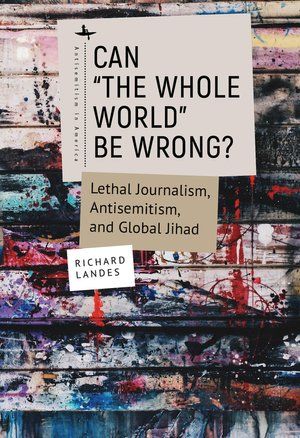This month PD goes non-fiction. Richard Landes' book, "Can The Whole World Be Wrong?", is a wake-up call to think independently, not follow the crowd. Although heavy going, the book uses copious evidence to show, through the example of the Israeli-Arab conflict, how the entire world, fed by a media that has ignored all of the tenets of good journalism, has absorbed a twisted narrative in which victims are demonised and terrorists are turned into victims. He calls this "lethal journalism". Over years, the truth has been buried and the lies have become the "new truth". This is not the first time in history that such erroneous group-think has resulted in loss of many lives, but it has and continues to happen in our lifetime. It is a must read wake-up call.

SUMMARY:
Richard Landes’ book “Can the whole world be wrong?” is a thought-provoking examination of the role of the media in shaping public opinion and the dangerous consequences that can arise from biased reporting.
The book focuses on three interconnected themes: lethal journalism, antisemitism, and global jihad. Landes argues that these issues are all connected, and that the media plays a crucial role in perpetuating dangerous myths and stereotypes that can lead to violence and conflict.
One of the key ideas in the book is the concept of “lethal journalism.” Landes argues that journalists have a responsibility to report on events in a way that is accurate and unbiased, but that all too often they fail to do so. Instead, they sensationalize stories, focus on the most violent or extreme elements, and ignore important context and nuance. This can lead to a distorted view of events that can be used to justify violence and extremism.
Another important theme in the book is the role of antisemitism in shaping public opinion. Landes argues that antisemitic myths and stereotypes have a long and dangerous history, and that they continue to shape the way that people view Jews and Israel today. He shows how these myths are perpetuated by the media, and how they can be used to justify violence and discrimination against Jews.
Finally, Landes explores the phenomenon of global jihad and the ways in which it is fueled by media coverage. He argues that the media’s focus on violence and conflict in the Muslim world can create a distorted view of Islam and its followers, and that this can be used to justify extremist ideologies and violence.
Overall, “Can the whole world be wrong?” is a powerful and important book that raises important questions about the role of the media in shaping public opinion and the dangerous consequences that can arise from biased reporting. It is a must-read for anyone who is interested in understanding the complex and often fraught relationship between the media, violence, and conflict.
NEXT MONTH: Something lighter.
HAPPY READING
PD